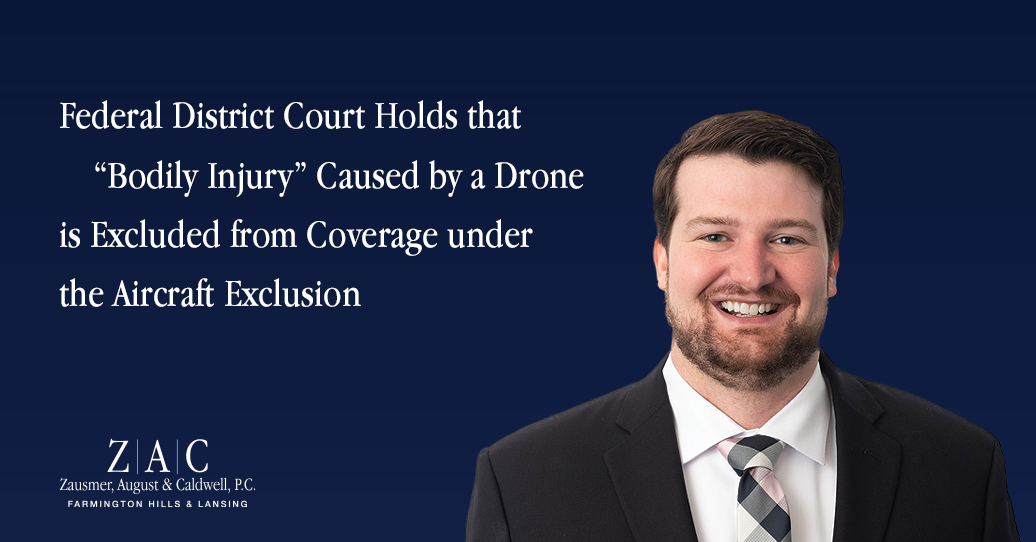In a recent opinion, the United States District Court for the Central District of California held that the aircraft exclusion commonly found in commercial general liability policies unambiguously applied to exclude coverage for bodily injuries caused by a drone.
In Philadelphia Indemnity Insurance Company v Hollycal Production, the insured was operating a drone to photograph a wedding. As an employee of the insured was flying the drone, the drone collided with the victim, causing her to lose sight in her eye. The victim subsequently filed suit against the insured for general negligence, and sought recovery for hospital and medical expenses, as well as loss of earning capacity. The insurer agreed to defend the insured, subject to a reservation of rights.
In the subsequent coverage action, the insurer argued that coverage was not afforded to the insured for the lawsuit because it was excluded by the aircraft exclusion, which provided that: “‘Bodily injury’ or ‘property damage’ arising out of the ownership, maintenance, use or entrustment to others of any aircraft, ‘auto’ or watercraft owned or operated by or rented or loaned to any insured” is excluded from coverage.
The United States District Court for the Central District of California agreed with the insurer, recognizing that the policy excluded any bodily injury arising out of the use of an aircraft operated by an insured. Although the term “aircraft” was not defined by the policy, the Court resorted to dictionary definitions of the term “aircraft” and held that the term was “unambiguous” and meant “a vehicle (such as an airplane or balloon) for traveling through the air.” As such, the Court ruled that the drone constituted an “aircraft” because it was a “vehicle … for traveling through the air.”
The Court further explained that the ordinary definition of an aircraft does not require the carrying of passengers or cargo, nor does it require an aircraft to be a “manned” aircraft. Ultimately, because the victim’s injuries resulted from the operation of an aircraft, the Court concluded that no coverage was afforded to the insured for the lawsuit.
Although this case is from the United States District Court for the Central District of California, very few cases have addressed this underdeveloped area of the law. Given the exploding use of drones nationwide, this case will carry substantial weight in jurisdictions where the issue has not yet been addressed.
If you have any questions regarding this case and its impact, please feel free to contact any of our insurance coverage attorneys.

Zausmer
We are committed to innovating and evolving, but our vision remains a constant. We provide the high-caliber representation and extensive resources of a big firm while offering clients the agility, flexibility, and entrepreneurial spirit of a small firm.


